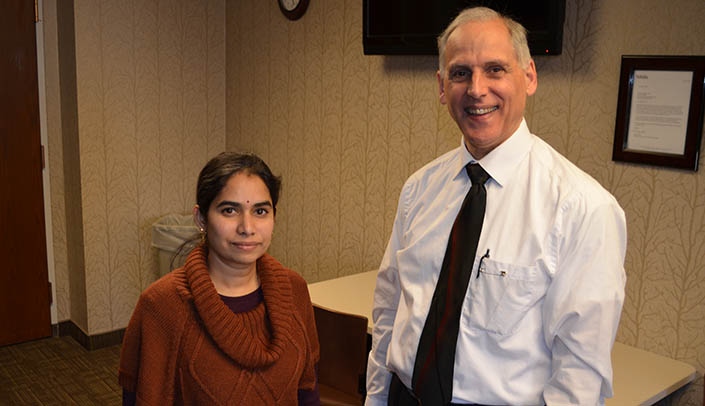It’s a mouthful: The Interprofessional Academy of Educators’ Interest Group on Curricular Design, Instructional Methods, Assessment and Evaluation.
Don’t let the long name put you off, though — co-chairs Craig Piquette, M.D., and Suhasini Kotcherlakota, Ph.D., will tell you the group is a gathering of educators looking at ways to improve teaching, testing and grading.
“We’re all involved in education, we all write curriculum, and we all try to figure out new instructional methods that will excite the students,” said Dr. Piquette, professor of internal medicine-pulmonary. “I come to these meetings to learn, and over the last year-and-a-half to two years, I’ve realized that everyone else is there to learn, as well.”
Topics grow organically from group discussions, said Dr. Kotcherlakota, assistant professor in the UNMC College of Nursing, and have included the ins-and-outs of the new learning management system, testing and evaluation, how to write and apply learning objectives, and — the current topic — how to teach health professionals to communicate with their patients.
“It’s a place to exchange ideas,” she said.
The next meeting will be held at 3 p.m. Monday in the McGoogan Library of Medicine, Room 8101, continuing a discussion on teaching communication that — like most of the group’s topics — sprang from an earlier discussion. (See the group’s agenda and minutes here.)
“One of the members of the group had a family member in the hospital and felt that communication might not have been optimal,” Dr. Piquette said. “That raised the issue of, ‘How do the individual schools teach their trainees how to communicate with patients and families?'”
The group assembled a panel of physicians, nurses, physical therapists and pharmacists to discuss how they teach their trainees to talk with patients and their families.
“We are all trying to learn, and we all take little tidbits that we get from other people’s experiences,” Dr. Piquette said.
The group also provides a safe space to discuss curricular or assessment innovations.
“If someone is working on an interesting project or idea, it’s a nice place to pitch the project and get feedback from the diverse group we have,” Dr. Kotcherlakota said.
“The main idea is, it’s a place to share,” she added. “The group itself does not come from a single college, so it’s a chance to get new ideas from different disciplines.”
“As the group has become more cohesive, we realize we all have things to learn from each other,” Dr. Piquette agreed.
